together




“Being recognized nationally for excellence is an important validation. That’s why I am delighted that Rutgers Cancer Institute of New Jersey together with RWJBarnabas Health achieved High Performing status in the adult specialty category for cancer in the most recent U.S. News & World Report Best Hospitals survey. This demonstrates the extraordinary, multidisciplinary care we provide for our communities, informed by groundbreaking cancer research, scientific leadership and transformational discoveries alongside exceptional patient experience.”
BARRY H. OSTROWSKY | Chief Executive Officer, RWJBarnabas Health


“As New Jersey’s largest and leading academic healthcare system, we pride ourselves on providing exceptional care for our communities together with our partners such as Rutgers Cancer Institute of New Jersey, the state’s only NCIDesignated Comprehensive Cancer Center. We congratulate Rutgers Cancer Institute on receiving the highest score in New Jersey in the adult specialty category for cancer in U.S. News & World Report’s annual Best Hospitals survey. This validates the exceptional level of cancer care we provide across our health system.”
Robert Wood Johnson University Hospital (RWJUH) has been recognized as one of the top five hospitals in New Jersey and a top 20 Regional Best Hospital in the New York metropolitan area by U.S. News & World Report in its annual Best Hospitals rankings. The hospital earned High Performing ratings in 12 adult specialties and common adult procedures and conditions.
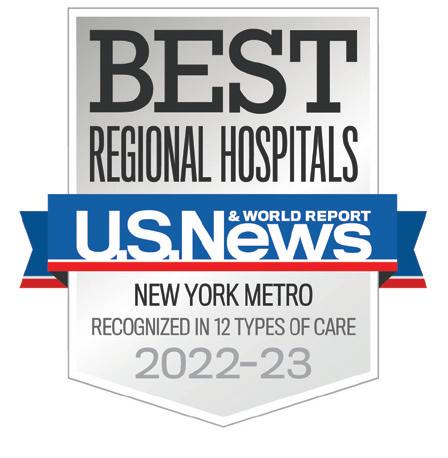
The ratings included high marks for cancer, gastroenterology and GI surgery, chronic obstructive pulmonary disease (COPD), colon cancer surgery, diabetes, heart attack, heart bypass surgery, heart failure, hip replacement, kidney failure, lung cancer surgery and stroke. A High Performing rating recognizes care that was significantly better than the national average, as measured by factors such as patient outcomes.
“We are proud to be nationally recognized, especially when the yardstick is based on superior patient outcomes. Being ranked as a U.S. News & World Report Best Hospital and home to one of the nation’s best maternity programs by both Healthgrades and Newsweek validates our commitment to improving health in our communities in our role as a leading academic medical center in partnership with Rutgers Robert Wood Johnson Medical School.”
1
Robert Wood Johnson University Hospital has earned the 2022 Labor and Delivery Excellence Award from Healthgrades, the leading resource that connects consumers, physicians and hospitals. This distinction places the hospital’s maternity program among the top 10 percent of hospitals evaluated for overall labor and delivery care. The hospital was also a five-star recipient for Natural Birth for the second consecutive year, as well as a five-star recipient for Hysterectomy in the Gynecologic Surgery section of the 2022 Women’s Care ratings.
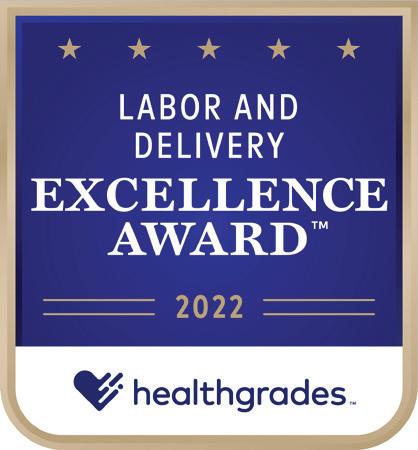
Robert Wood Johnson University Hospital New Brunswick complies
the
federal
rights laws and does not
more information,
las leyes
de
aplicables
de raza, color, nacionalidad, edad, discapacidad
de forma gratuita,
dwa
For
disponibles
asistencia
Robert Wood Johnson University Hospital’s Robotic Surgical Services Team recently performed its first robotic surgery case at the hospital’s outpatient Ambulatory Surgical Pavilion (ASP) using the DaVinci X robot—the latest generation of the technology. Robotic surgery procedures now performed at the ASP include most hernia surgeries, gallbladder surgeries and certain gynecologic and urologic procedures. This is the first robotic surgery performed in an ambulatory surgery center within RWJBarnabas Health.
2. WELCOME LETTER. A community update from our leadership.
4. ‘I WAS GOING TO DO WHATEVER IT TOOK TO LIVE.’ Weight loss surgery and lifestyle changes help a man lose 300 pounds.

6. ‘NEVER GIVE UP.’ A heart transplant renews a man’s life and honors the memory of his father.
8. A NEW TOOL FOR MANAGING YOUR HEALTH. MyChart offers online access to medical records and more.

10. COPING WITH HOLIDAY DEPRESSION. How to move through the melancholy that often comes with the holidays.
12. NAVIGATING YOUR CANCER JOURNEY. RWJBH’s Nurse Navigation Program provides support, guidance and compassion.

14. ONE STEP AT A TIME. How the physical therapy team at Children’s Specialized Hospital helped a boy with spina bifida.
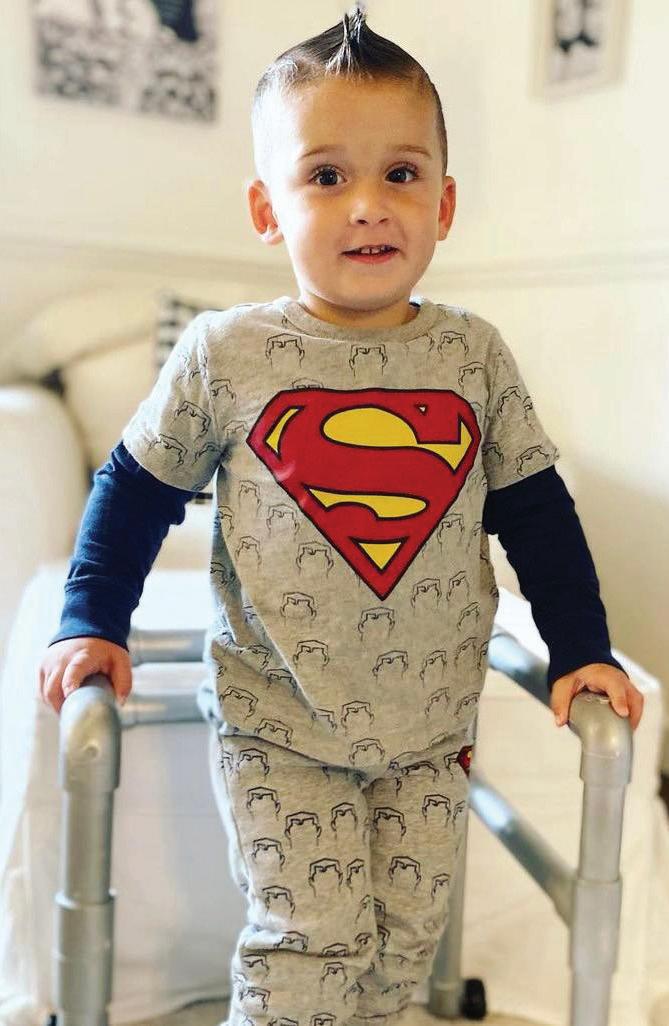
16. THE LOWDOWN ON LOWDOSE ASPIRIN. The latest guidelines for heart attack and stroke prevention.

17. SEIZURE SOLUTIONS. Epilepsy is disruptive but highly treatable.
18. HELP FOR BIRTH DEFECTS. How we treat cleft lip, cleft palate and other craniofacial differences.
20. A PRECISION WEAPON AGAINST CANCER. Proton radiation therapy gives a woman another way to fight.
22. SUPPORTING SURGERY FOR CHILDREN. A golf event funds advanced pediatric care.

23. HANDS-ON LEARNING. A grant provides augmented reality training technology.

J.B. Flemming McNeill has lost more than 44 percent of his body weight thanks to weight loss surgery combined with lifestyle steps such as a healthy eating plan and regular workouts.
WEIGHT LOSS
Four years ago, J.B. Flemming McNeill weighed nearly 700 pounds when his primary care physician delivered a warning he would never forget. “She said to me, ‘If you do not make a change, you’re going to die,’” says the 37-year-old Linden resident. “It was the first time I had heard those words.”
The warning was a wake-up call for McNeill, who had struggled with his weight since childhood.
Obesity-related health issues, including highRAGUI SADEK, MD, FACS
blood pressure and body pain, had forced him to stop working at the time. “My life was so miserable,” he says. “I was on the way to an early grave.”
To save his life, McNeill decided to have weight loss, or bariatric, surgery at Robert Wood Johnson University Hospital (RWJUH). Surgery helped him lose hundreds of pounds, and he now wakes up at 5 a.m. to exercise with a personal trainer five days a week. It’s a dramatic transformation for McNeill, who at one point could barely walk without struggling to breathe.

“His outlook on life has completely changed,” says Ragui Sadek, MD, FACS, Director of Metabolic and Bariatric Surgery at RWJUH and Clinical

Assistant Professor of Surgery at Rutgers Robert Wood Johnson Medical School. “He’s been cured of a lifethreatening disease that diminished his quality of life.”
McNeill’s family has a history of obesity due to poor diet and lack of exercise, and while growing up, he coped with trauma and verbal, physical and sexual abuse by eating. “I took comfort in food,” he says.
“When I was sad, happy, mad or glad, I would eat.” He developed severe health issues linked to being overweight, such as sleep apnea, liver failure and chest pain.
When McNeill’s mother and uncle passed away from obesity-related
• CARDIOLOGY: Tests such as an
what
• ENDOCRINOLOGY:
• PSYCHOLOGY:
heart
you have diabetes?
helps
and cardiac stress test help
in metabolic
lifestyle
dietary changes
remainder so it could hold no more than 4 to 6 ounces of food. Gastric bypass surgery would reroute food to a smaller portion of McNeill’s stomach and small intestine to further reduce hunger and calorie consumption.
Before he could safely undergo surgery, however, McNeill needed to lose around 50 pounds on his own through a weight loss plan of exercise and diet changes guided by RWJUH experts.
“He was very motivated and keen on changing his lifestyle, getting healthy and regaining control over his medical condition and life,” Dr. Sadek says.
medical conditions, he began to consider bariatric surgery. “They made me want to do better for myself,” McNeill says. “I was going to do whatever it took to live.”
His physician’s warning a few years later finally pushed him to act. His sister, who also has weight challenges, suggested meeting with Dr. Sadek. At the first appointment, McNeill tipped the scales at 696 pounds.
“Having a body mass index [BMI] that high is a life-threatening condition,” Dr. Sadek says. “Every day causes irreversible damage to the body.”
Bariatric surgery would jump-start McNeill’s weight loss and help prevent deadly obesity-related complications. Because of McNeill’s unusually high BMI, Dr. Sadek recommended a twostage process: a gastric sleeve operation followed by gastric bypass surgery a few months later. “Depending on a patient’s BMI and overall health, doing a staged approach can be a safer way to get patients to their goal weight,” Dr. Sadek says.
Both procedures change the way food is absorbed by the body, decreasing appetite and food intake. Gastric sleeve surgery would remove a portion of McNeill’s stomach and shrink the
Bariatric surgery is a safe and highly effective way to address obesity, Dr. Sadek says. Both gastric sleeve and gastric bypass procedures provide significant health and social benefits.
“Over the 16 years I’ve done this, I’ve never heard anything but patients saying they would do it all over again,” Dr. Sadek says.
After undergoing the surgeries in 2019, McNeill dropped more than 300 pounds—44 percent of his original body weight. Just as important as the physical transformation was the improvement in McNeill’s daily life. “I can wear a seat belt now with no extender,” he says. “I can fit in chairs with arms. It’s amazing being able to do things that I never could do before.”
Ensuring the surgery’s success required long-term lifestyle changes.

“Bariatric surgery is not an easy way out,” Dr. Sadek says. “It’s a way to give patients control over obesity, but they have to work to maintain that.”
Following his recovery, McNeill joined a nearby gym and created a healthy eating plan with a nutritionist. He also started a Facebook page to track his progress and inspire others struggling with obesity.
“It’s not easy, but it is rewarding,” McNeill says. “The best is still to come. You haven’t seen anything yet.”

Nandan Savalia always enjoyed living a healthy lifestyle. He kept active, went to fitness classes at his gym and watched his diet.
He never had any heart health issues. Then came a day in June 2018.
“I took cardio boot camp and yoga classes three times a week or more,” says the 50-year-old Manalapan resident. “After one class, I felt a little shortness of breath that wouldn’t go away.”
Savalia figured he just needed to cool down and relax following the vigorous workout. But at home more than an hour later, he still couldn’t catch his breath.
Concerned, he headed to a local emergency room where, after a series of tests, doctors came to a surprising
conclusion: Savalia had suffered a heart attack. And despite being given a clot-busting drug, his symptoms were growing worse.
Savalia required more advanced care than the local hospital could provide. He was airlifted to Robert Wood Johnson University Hospital (RWJUH), a cardiovascular center of excellence.

What began as seemingly momentary fatigue actually was the start of a three-year journey more complex and emotional than Savalia could have imagined.
 HIROHISA IKEGAMI, MD
Nandan Savalia (second from left) can once again live an active life with (from left) children Riya and Rohan, and wife Toral.
HIROHISA IKEGAMI, MD
Nandan Savalia (second from left) can once again live an active life with (from left) children Riya and Rohan, and wife Toral.
At RWJUH, Savalia underwent a cardiac catheterization procedure in which a catheter (a small tube) is inserted through the groin or wrist and threaded through an artery toward the heart. The procedure can reveal blockages in arteries supplying blood to the heart and, if necessary, unclog them. Savalia indeed had a blockage. But his heart muscle had already been damaged and its function reduced.
Time didn’t improve Savalia’s symptoms. “After six to eight months, I started getting more and more tired,” Savalia says. Physical activities that never gave him trouble before were now a challenge.
Savalia was then referred to the hospital’s Advanced Heart Failure and Transplant Cardiology Program to be evaluated by a multidisciplinary team led by Medical Director Deepa Iyer, MD, who is also Assistant Professor of Medicine at Rutgers Robert Wood Johnson Medical School (RWJMS), and Hirohisa Ikegami, MD, Assistant Professor of Surgery at RWJMS and Surgical Director of the heart transplant program.
Savalia was suffering from heart failure, a condition in which the heart muscle has trouble pumping enough oxygen-rich blood to meet the body’s needs.
He received medication to support his heart and lung function but needed even more advanced care: He was placed on the waiting list for a heart transplant.
Not only was Savalia’s heart function low, but pressure in arteries to his lungs was high, which can worsen difficulties with blood and oxygen supply to the body. The team implanted a temporary ventricular assist device (VAD), which helps pump blood from the heart to prevent damage to other vital organs.
Savalia would spend 51 days in
RWJUH’s Cardiovascular Intensive
Care Unit (CVICU) before receiving his lifesaving heart transplant—a wait that was full of ups and downs.
On his birthday in July 2021, Savalia received a surprise: He was told a heart might be available. But tests found that Savalia’s blood had antibodies to the donor heart, which meant his body could reject the transplanted organ.
Savalia could only continue to wait, working remotely at his information technology job and walking 15 to 20 laps around the CVICU each day to stay as healthy as he could.
The waiting wasn’t the most difficult part. During this time, his father, who had been undergoing cancer treatments, had a fall that led to surgery at RWJUH for a brain hemorrhage.
Savalia’s care team made arrangements for Savalia to safely visit his father in RWJUH’s Neurocritical Care Intensive Care Unit.
“I was able to visit my father but lost him on August 12,” Savalia says. Overwhelmed with grief, Savalia became even more determined to survive and leave the hospital to be with his wife, Toral, and his two children, Riya, 16, and Rohan, 14.
Six days after his father’s death came the news Savalia had waited to hear: A donor heart had been found and was a perfect match. It seemed to Savalia as if his father had gone to heaven to make sure a heart would be provided.
“Mr. Savalia has been an epitome of resilience, courage and perseverance,” Dr. Iyer says. “Our entire team celebrated when we were able to let him know that we had the perfect donor heart for him. He had an amazing recovery.”
Savalia was able to walk just three days post-transplant and was discharged
The Advanced Heart Failure and Transplant Cardiology Program at Robert Wood Johnson University Hospital provides deep expertise from a multidisciplinary team that includes:
• Kenneth Dulnuan, MD, advanced heart failure and transplant cardiology specialist
• Hirohisa Ikegami, MD, Surgical Director
• Deepa Iyer, MD, Medical Director
• Anthony Lemaire, MD, thoracic and cardiac surgeon
• Danyaal Moin, MD, advanced heart failure and transplant cardiology specialist
• Mark Russo, MD, MS, Chief, Division of Cardiac Surgery
• Gengo Sunagawa, MD, thoracic and cardiac surgeon
• Manabu Takebe, MD, thoracic and cardiac surgeon
• Transplant-trained and -certified nurse practitioners and nurse coordinators, cardiac anesthesiologists, cardiac perfusionists, critical care specialists, transplant pharmacists, registered nurses, registered dietitians, social workers, cardiac rehabilitation therapists and other medical professionals dedicated to heart care
to his home on August 26, eight days after his transplant. “He follows up for post-transplant testing and visits, is doing very well and continues to inspire everyone with his dedication and discipline,” says Dr. Iyer.
Savalia now logs 10,000 steps a day and looks forward to traveling again with his wife and children. “I lost three years of my life, so it is good to get life back to normal,” he said. “My advice to other patients is to never give up.”
Yes.
stores and secures patient
accordance with privacy standards
Health Insurance Portability and
No.
Healthcare providers once relied on paper medical records that were largely inaccessible to patients. Today, providers often store information such as health history, diagnoses, treatments, medications and billing and payments digitally. This electronic health information can be securely shared, creating opportunities for patients to participate in their own care.
Now Robert Wood Johnson University Hospital (RWJUH) has rolled out a patient engagement platform called MyChart. It’s part of an electronic health records (EHR) system called Epic being implemented across the RWJBarnabas Health (RWJBH) system in stages. When completed, the entire network will be on one EHR system.
“MyChart equips patients with important information at their fingertips,” says Jill Anderson, RWJBH Vice President, Patient Experience. “Providing patients with information about their personal health record allows
them to feel connected and informed regarding their care. That engagement empowers patients and builds trust so they’re more likely to take an active role in their health.”
MyChart gives you and your RWJBH medical team shared access to your patient health history, which helps providers better coordinate your care.
For assistance with MyChart,
“You don’t need multiple accounts or access points,” says Harshal Shah, RWJBH Corporate Director, Digital Health.
“Everything is centralized in MyChart.”
MyChart also allows you to manage care for children and other consenting loved ones from your own account. It can be navigated in Spanish as well as English.
Key features allow you to:
• View a range of health information: Records include which providers you’ve visited, what you discussed, prescriptions, scheduled screenings, family history,
allergies and vaccinations. You can edit certain information such as adding family history or immunizations.
• Get test results: Findings are posted to your account as soon as they’re available. Having actual values tells you exactly where you stand and allows you to track trends over time.
• Manage your care: You can request appointments with RWJBarnabas Health Medical Group providers, schedule tests and procedures such as annual mammograms or change existing appointments. You can also use MyChart to renew prescriptions or report if you’ve stopped taking medications.
• Fill out forms: Pre-appointment questionnaires can be completed online instead of in your doctor’s waiting room, which saves time during your visit.
• Connect with providers: MyChart lets you send messages to your care team and ask nonurgent questions. You can also talk face-to-face with providers from home using telemedicine technology.

• Track bills and payments: MyChart shows your charges, allows you to make credit or debit card payments online and enables you to ask billing questions.
“As a high-reliability organization, RWJBH continually strives to offer patients consistent excellence in quality and safety, and always seeks to improve performance,” says Anderson. “Launching MyChart meets those goals by quickly and easily putting trusted health information in the hands of patients.”
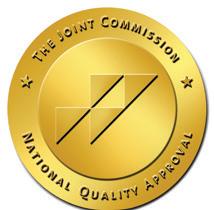















When you need treatment for spinal problems, even the thought of traveling out-of-state for care can be painful. At RWJBarnabas Health, our orthopedic surgeons and neurosurgeons work with you to create a personalized treatment plan, right in your own community. We offer non-surgical treatments in addition to the latest surgical techniques, such as reconstruction and minimally invasive robotic surgery. Learn more at rwjbh.org/spine

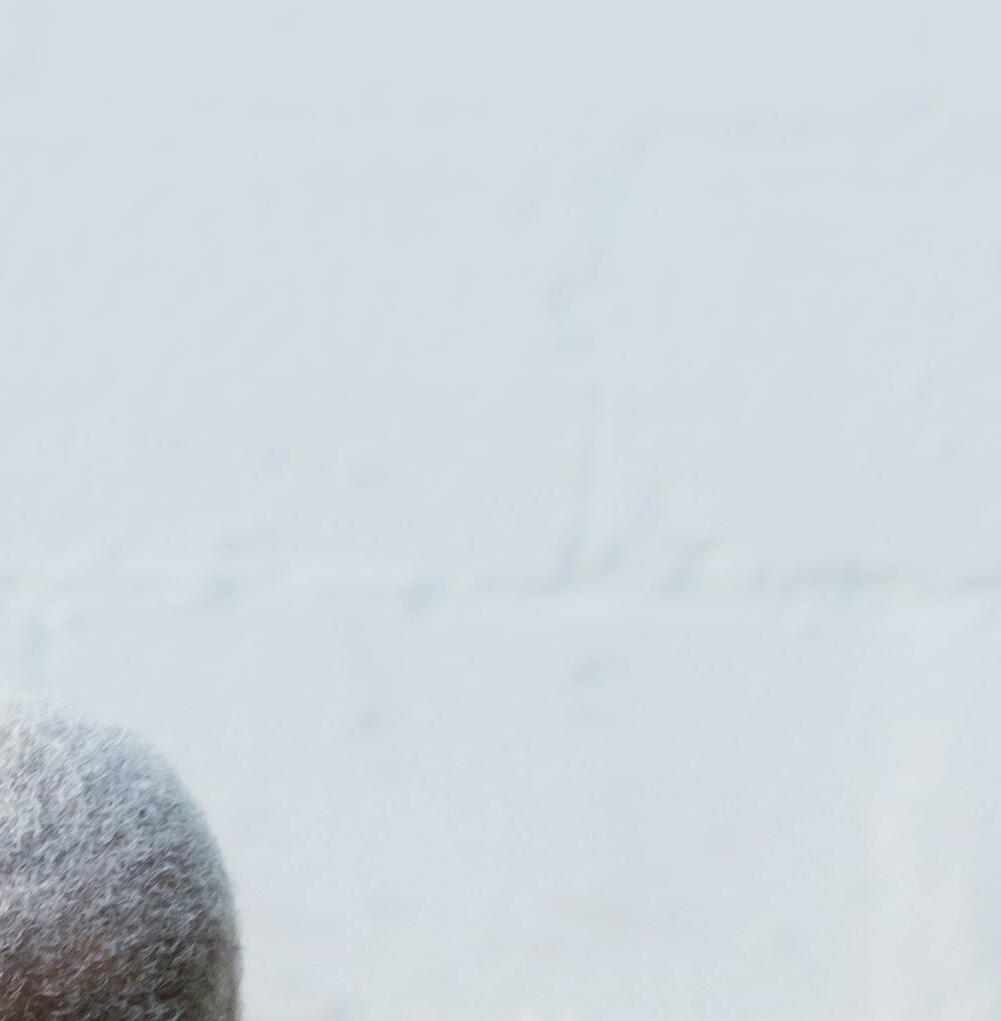

The days are getting shorter, the weather’s getting cooler and soon the holidays will be here. For some of us, the weeks and months leading up to the holiday season are filled with eager anticipation. But for many others, this time can be an emotional minefield fraught with crippling anxiety and depression. Here, psychiatrist Arnold Williams, MD, Medical Director of the Behavioral Health Center, part of RWJBarnabas Health’s Behavioral Health and Addictions Services, explains the link between the holidays and depression—and offers advice to help you cope.
Why do people get depressed around the holidays?
The holidays coincide with late fall and winter, when exposure to sunlight is decreased. This can have a profound effect on mood. In addition, many businesses slow or even shut down during the holidays, and, for some, that may mean fewer opportunities for social interaction.
Do the holidays tend to exacerbate existing depression?
The holiday season is a time of reflection and gift-giving, which can be rewarding for those in fortunate circumstances. However, isolation, separation from loved ones and anniversaries of loss can all worsen depression.
What’s the difference between being depressed and simply feeling sad?
According to RWJBarnabas psychiatrist Arnold Williams, MD, there are things you can do to mitigate depression:
1. Maintain contact with friends and family, if possible.
2. Get as much natural sunlight as you can.
3. Exercise—walk, run, move.
4. Practice yoga, mindfulness and meditation. They work!
5. Recognize that this too shall pass. You’ve survived all of the bad days you’ve had so far— that’s proof that things can get better again.
6. Don’t try to ease the pain with substances; it will compound the problem.
7. Know that you’re not alone. Reach out to a professional who can help you.

patterns and reduced self-esteem. At its most extreme, depression can include suicidal thoughts or feelings of not wanting to be alive.
Do depression and anxiety always go hand-in-hand?
They can happen together or separately. Philosophically, depression and anxiety are two sides of the same coin. Anxiety is an anticipatory “what if” reaction, dreading the unknown and fearing the worst. Depression is a conclusion that the worst is happening right now and may not ever get better.
ARNOLD A. WILLIAMS, MD
Depression implies a wide constellation of symptoms over several days or weeks. The emotion itself is only one component. Most commonly, that emotion is sadness, but there can also be anger, loneliness, worry or anxiety, as well as changes in thoughts and behaviors. Examples include losing interest in things you usually enjoy, a decrease in energy, changes in appetite or sleep
How does grief impact depression and vice versa? Grief can be a trigger for a relapse in depression, and a person who’s been depressed may experience a prolonged grief period. The holidays are difficult partly because they’re usually connected to memories of a lost loved one.
Being diagnosed with cancer is life-changing. It can have a profound effect on your psyche, leaving you feeling frightened, confused and overwhelmed. At the same time, you need to make calm, clear and timely decisions about important matters such as doctors and treatment options.
That’s why RWJBarnabas Health (RWJBH) and Rutgers Cancer
Institute of New Jersey, the state’s only National Cancer InstituteDesignated Comprehensive Cancer Center, developed the Oncology Nurse Navigation Program.
For a person with cancer, a nurse navigator is not just a valuable resource, but a smiling face and a caring individual to help you and your family maneuver the often uncharted territory of your cancer journey.

Jeanne Silva, MSN, RN-BC, Assistant Vice President, Oncology Access and Nurse Navigation, Oncology Services, explains what the Oncology Nurse Navigation Program is and how it works.
What does the Oncology Nurse Navigation Program do?
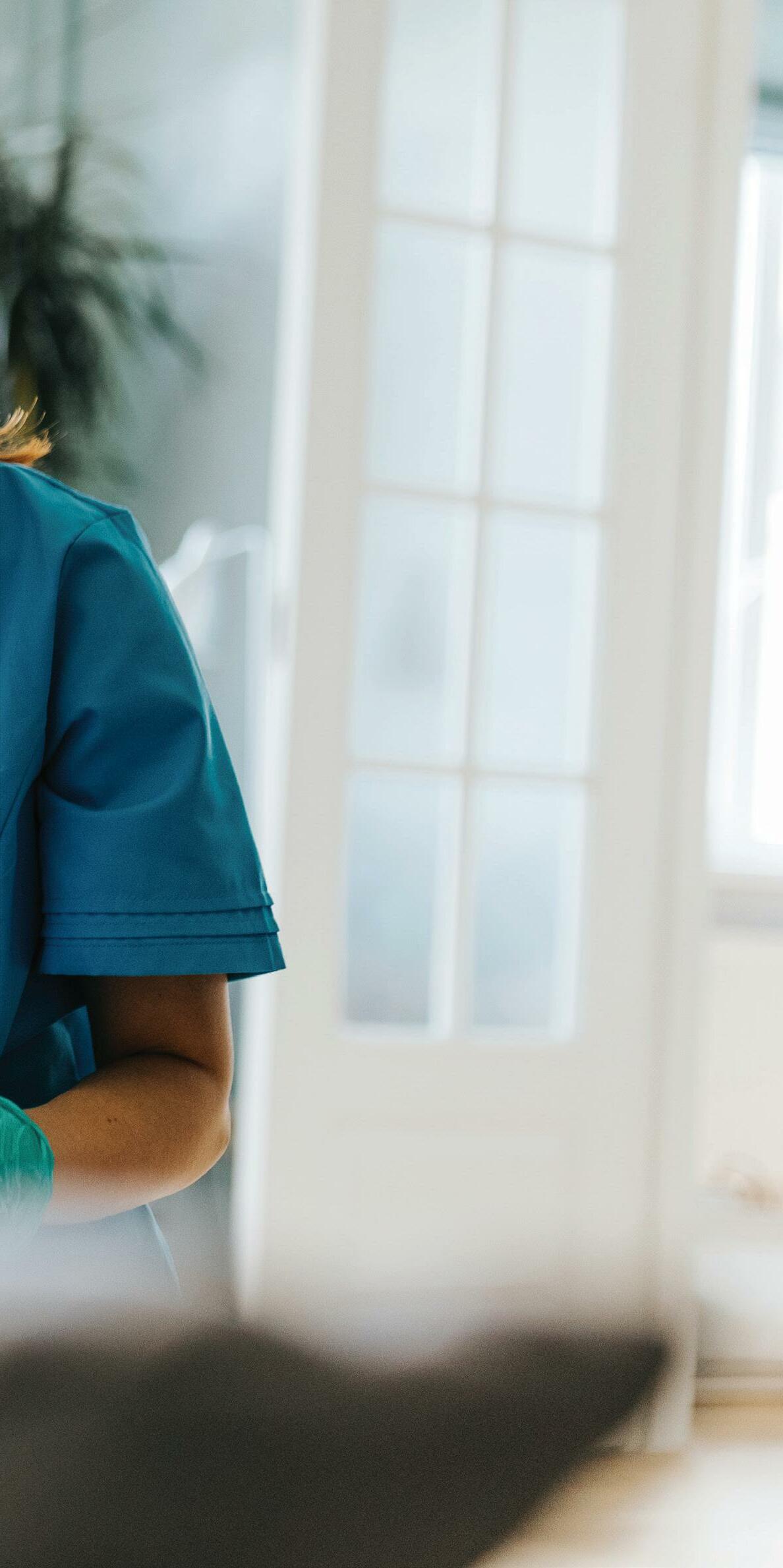
If you’re diagnosed with cancer and are a patient at RWJBH, the program
places an expert at your side who advocates for you and provides direction, support and information through all phases of treatment at no additional charge. The nurse navigator is the hub of your care team, communicating your needs across departments and answering your questions about what to expect, what to do, where to go and why. Having a trusted, committed expert guiding
you helps you participate fully in treatment decisions, achieve quality outcomes and reduce stress.
When was the program developed, and how has it changed since its inception?
The RWJBH nurse navigation program began in 2018 with 18 navigators. Today we have 45 navigators and are growing. Oncology nurses receive navigationspecific training as well as ongoing education to improve care through measures such as shortening the time between diagnosis and meeting with an oncologist and improving access to palliative care.
Our program is the state’s largest. We routinely conduct quality improvement projects and have presented our outcomes nationally to share best practices. We are one team across our facilities. If you see an oncologist from Rutgers Cancer Institute, for example, but want to receive radiation therapy closer to home or need to see an RWJBH subspecialist, we help coordinate your care seamlessly between sites.
What are some benefits that patients might find surprising?
You’re quickly assessed for any barriers to care and provided resources to overcome them. Barriers often include lack of knowledge, transportation difficulties and financial hurdles. Helping you ease worries allows you to focus on getting well. One aspect is that anxiety and fear of the unknown sometimes prevent people from starting potentially life-saving treatments. We’ll assess this and provide support so you can get the right care. Or, for example, if you’re a candidate for a clinical trial, the navigator can educate you about that and connect you with a research team.
Each navigator brings a wealth of knowledge, energy and empathy. You’re unique with your own story, and the navigator is there to listen and help.
RWJBarnabas Health, in partnership with Rutgers Cancer Institute of New Jersey—the state’s only NCI-Designated Comprehensive Cancer Center—provides close-to-home access to the most advanced treatment options. Call 844.CANCERNJ or visit www.rwjbh.org/beatcancer.
Nikos Kaymakcian is a happy little boy who loves pirates and practicing karate with his older brother, Arman. As he approaches his fourth birthday, his parents, Nicole and AJ Kaymakcian, can’t help but wonder how their lives might be different if they hadn’t sought a second opinion when Nicole was pregnant with Nikos. It was then, at their 20-week ultrasound, that Nicole and AJ were told that their son has spina bifida, a neural tube defect (NTD) that often results in spinal cord and nerve damage. “The doctor told us that our son would never walk or be able to use the bathroom on his own and would require a shunt to drain fluid from his brain,” Nicole recalls. In one fell swoop, their hopes and dreams for their baby came crashing down.
But a friend whose child had received a similar diagnosis recommended that

Nicole contact her neurosurgeon for a second opinion. After examining Nicole and her baby, the doctor told Nicole to go home and enjoy her pregnancy. “He said, ‘When your son is born, we’ll do surgery and take it from there,’” she remembers. And that’s what happened.
In October, 2018, Nicole gave birth to Nikos at Monmouth Medical Center, and the neurosurgeon performed the baby’s surgery the following day. Before his first birthday, Nikos began early intervention with physical therapy at Children’s Specialized Hospital (CSH), part of the Children’s Health Network
at RWJBarnabas Health.
CSH physical therapist Tara Iannello, who has been working with Nikos since then, “is an angel,” says Nicole. Nikos also works with physical therapist Natalie Vulpis. “She gives Nikos a push when he doesn’t want to do something and has also been a great fit for him,” says Nicole.
The CSH physical therapists go out of their way, not only to provide great care, but to customize it and make it fun. “Last year, Nikos loved superheroes,” says Nicole, “so Tara set up superhero action figures in stations so he had to practice walking to each one.”
Though Nikos has some weakness in his ankles and feet due to nerve damage, he’s on par with all other milestones for his age and, says his mom, “he’s now walking with braces and his walker, taking steps on his own.
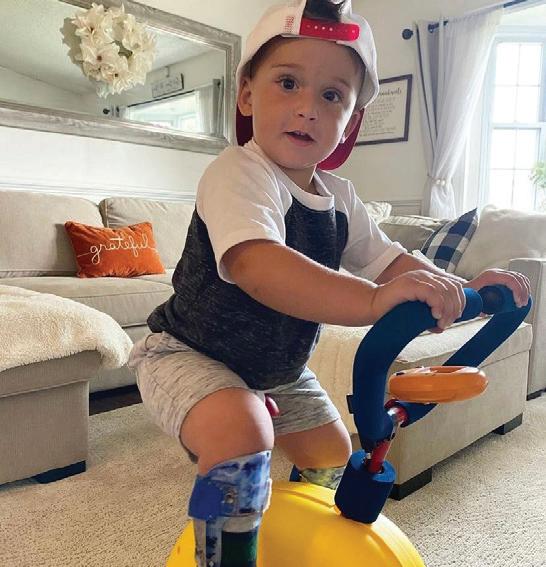


“I can’t say enough good things about what the people at CSH have done for my son. We’re so blessed.
We love them with all our heart.”
The feelings are mutual. “He’s such a sweet and funny kid, and he’s gotten so strong,” Iannello says of Nikos. “We have no doubt that he’s going to do great things in this world.”
Clifton, East
and West Orange.
For years, taking a daily low-dose aspirin for the prevention of heart attack and stroke has been a widely accepted practice. But the U.S. Preventive Services Task Force (USPSTF) recently issued updated guidelines recommending against its use in certain patients for primary prevention of heart disease. Here, cardiologist Jeffrey S. Lander, MD, Co-Director of Sports Cardiology at RWJBarnabas Health, Co-Medical Director of the Cardiac Care Unit at Cooperman Barnabas Medical Center and a member of RWJBarnabas Health Medical Group, explains.
How are the new guidelines different from the previous guidelines?
This is a big change from the 2016 guidelines, which recommended using aspirin for primary prevention in adults aged 50 to 59 who were at risk for cardiovascular disease, and to consider its use for certain adults aged 60 to 69 who were at risk for cardiovascular disease.
recent stent procedure. If someone has that history, it’s generally beneficial to take a low-dose daily aspirin as it helps reduce the risk of recurrent cardiac disease or events.
If someone has been following a lowdose aspirin regimen for years, what should they do?
JEFFREY S. LANDER, MD
The 2022 guidelines state that using aspirin in select 40to 59-year-olds may have some benefit in preventing heart disease, but it is not recommended for people aged 60 and older.
Older trials of aspirin use for primary prevention showed benefits—for example, reduction in heart attacks. However, more recent studies did not show a significant reduction in cardiovascular disease. In addition, many of these trials also showed significant risk of internal bleeding among those taking daily aspirin. Given these findings, the recommendations changed.
It’s very important to remember that these recommendations don’t pertain to patients with a prior history of heart attack, stroke, bypass surgery or a
In that case, it’s important that they speak to their doctor or healthcare provider before making any changes. All of the risks and benefits should be weighed prior to stopping aspirin. Most of the time when aspirin is to be stopped, it’s OK to simply stop; a stepdown approach isn’t needed.
How will the new guidelines change your recommendations to patients?
I feel that most of the latest evidence is in support of the new guideline recommendations.
Each patient is unique, and when recommending to either use or not use aspirin for primary prevention of heart disease, the risks and benefits should be discussed and weighed by doctor and patient to make an individualized plan.

Our brains constantly produce electrical activity. “That’s what allows us to talk, move and function,” says Brad Kamitaki, MD, a neurologist at Robert Wood Johnson University Hospital (RWJUH) and Rutgers Robert Wood Johnson Medical School.
But in some people, the brain’s electrical activity fires abnormally and can cause a seizure—a condition known as epilepsy that is one of Dr. Kamitaki’s specialties. “Seizures vary widely in severity depending on what part of the brain is affected,” he says.
Fortunately, epilepsy can be managed, beginning with greater understanding. Dr. Kamitaki explains more about this sometimesmisunderstood neurologic condition.
What are some different types of seizures?
Some people have what used to be called grand mal seizures, which we now refer to as generalized tonic-clonic seizures. These are significant events with whole-body shaking and loss of consciousness.
Adults may have temporal lobe seizures, which often start with an aura, or a sense of the seizure coming on, sometimes through feelings such as déjà vu, nausea, fear or abnormal tastes or smells. These progress to loss of awareness that may or may not include
shaking, often of the limbs.
Children commonly have absence seizures, which involve brief, sudden losses of consciousness—usually less than 20 seconds—that may look as if the person is just zoning out or staring into space.
And there are more severe childhood seizure disorders that can be associated with delays in language and cognitive function, probably due to both the disease and the consequences of frequent seizures.
Epilepsy includes a range of seizure disorders that can be caused by any process affecting the brain’s cortex and higher cognitive function. Sometimes the cause is genetic—either inherited or the result of a unique mutation. Other causes include lack of oxygen to the brain when a baby is delivered, brain tumors, strokes and brain infections. But in up to half of people with epilepsy, seizures are unexplained.
One is “Put something in the mouth of a person having a seizure so they don’t swallow their tongue.” You can’t swallow your tongue, and putting something in someone’s mouth might cause choking. Instead, roll the person on their side to
BRAD KAMITAKI, MD
keep them from choking or aspirating saliva or vomit.
Another is “You can never drive if you have epilepsy.” In New Jersey, if you’ve been seizure-free for six months or more, you’re allowed to drive.
And some people say, “Epilepsy means you can’t live a normal life.” Many people with epilepsy work, go to school and have complete and fulfilling lives.
How can epilepsy be managed?
Some children grow out of absence seizures, but most people with epilepsy are at risk for future seizures. My goal for patients is zero seizures. Medication leaves about two-thirds of patients seizure-free with the first or second drug they try. Those who try at least two and keep having seizures should see a specialty-trained epileptologist at an epilepsy center like RWJUH, which is ranked at the highest level by the National Association of Epilepsy Centers.
We offer a full range of advanced epilepsy services, including several surgeries found to be effective against drug-resistant epilepsy. We’re also involved in clinical trials, including studies of an inhaled medication to stop seizures as they’re happening and a transcranial direct current stimulation unit, which, unlike other devices for treating epilepsy, is noninvasive.
Aditi Kanth, MD (left), and Joseph Vella, MD, are part of a multidisciplinary team offering care for a wide range of craniofacial problems.

Some parents may encounter craniofacial problems like cleft lip and cleft palate only through charitable TV ads. “A lot of people think these problems just affect kids in other countries,” says Aditi Kanth, MD, a craniofacial surgeon and pediatric plastic surgeon with The Bristol-Myers Squibb Children’s Hospital (BMSCH) at Robert Wood Johnson University Hospital and Assistant Professor at Rutgers Robert Wood Johnson Medical School (RWJMS). “But these are extremely common birth defects, and it’s important that parents have access to care for them.”
BMSCH now has a dedicated program that guides parents on treatments for craniofacial anomalies. The program, which began in March, provides care from a multidisciplinary team led by craniofacial surgeons with backgrounds in both plastic and ear-nose-and-throat procedures.
“It’s uncommon for a program to combine these and other disciplines for cleft care,” says Joseph Vella, MD, PhD, a facial plastic and reconstructive surgeon and an
otolaryngologist/head and neck surgeon at BMSCH, and Assistant Professor in the Department of Otolaryngology/Head and Neck Surgery and Chief of the Division of Facial Plastic and Reconstructive Surgery at RWJMS. “We offer comprehensive care to the community with an array of critical team members required for craniofacial interdisciplinary care.”
If you’re the parent of a child with a craniofacial abnormality, these steps can help guide care—and provide peace of mind.
Fixing a craniofacial defect such as cleft lip or palate isn’t a one-and-done surgery. “Kids tend to require an ongoing array of different specialists,” Dr. Kanth says. The BMSCH team includes specialists in areas such as oral surgery, pediatric dentistry, orthodontics, speech, feeding, pediatric genetics and pediatric neurosurgery. “Parents don’t need to piece together multiple specialists on their own,” Dr. Vella says. “We provide a one-stop shop where they can see all their specialists in one place, often in one visit.”
BEGIN EARLY. Craniofacial defects are often identified by ultrasound during pregnancy. “We’re creating a pathway where expectant parents get a prenatal diagnosis and meet with us before the baby is born to determine what services will be needed and create a general operative plan,” Dr. Kanth says. “This streamlines care, and there’s evidence that this improves outcomes in terms of factors such as time to treatment and number of surgeries. It also tends to relieve anxiety for families.”
“Kids can be born with an array of congenital facial differences or anomalies that may require surgeries and therapies throughout life or until they reach skeletal maturity,” Dr. Vella says. Craniofacial problems can potentially lead to abnormalities in hearing, speech development and bone growth. “We stay with our young patients as they get older to make sure all aspects of their craniofacial growth and development are on track,” Dr. Vella says.
A typical plan of care might entail surgery to repair a child’s cleft lip at 3 months, surgery to fix a cleft palate at 1 year and surgery to resolve skeletal issues in the jaw at age
Cleft lip and cleft palate are common birth defects that occur when facial structures don’t form properly during pregnancy. Clefts, or splits, in the upper lip or roof of the mouth may occur separately or together. Both can readily be corrected with surgery that restores appearance and protects against developmental problems that can result if clefts go untreated.
Cleft lip and cleft palate are among a range of craniofacial abnormalities that can develop during pregnancy. Other craniofacial problems include skull malformations that can prevent normal development but also can be corrected with surgery.
8 or 9. Orthodontic and other care may also be required.
Some children need to address different craniofacial issues. One of the most common is a premature fusion of skull joints that prevents normal growth, which potentially can lead to pressure on the brain. “At BMSCH, it’s easy to access specialists who can provide expert craniofacial care in a timely manner,” Dr. Vella says.
Sophisticated tools can help with treatment planning. These include 3D computer imaging, which can be combined with 3D printing to create physical models of a child’s face and head structures. “Having something you can interact with virtually or physically is extremely helpful for efficient, targeted intraoperative planning,” Dr. Vella says.
Receiving news that a child has a problem such as a facial difference can trigger parent anxiety. “Talking about it and planning even before the birth can take a lot of weight and worry off parents’ shoulders,” Dr. Vella says. “It can be reassuring to realize we have many modalities available to restore facial appearance and that we are going to be with them every step of the way.”
“Most patients are completely normal kids who happen to have a facial difference,” Dr. Kanth says. “We provide care so kids can be kids and lead the lives they are meant to lead.”
To learn more about
Squibb Children’s Hospital
Wood
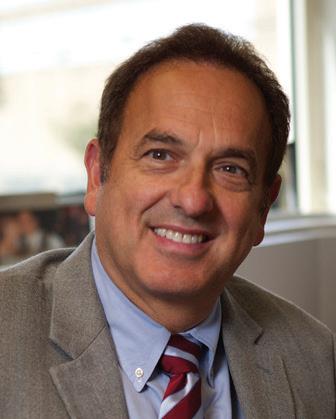
Life could not have seemed better for Rebecca Swamy in 2015. The Freehold resident enjoyed her job as a special education teacher along with off-hours activities such as running, reading and spending time with her

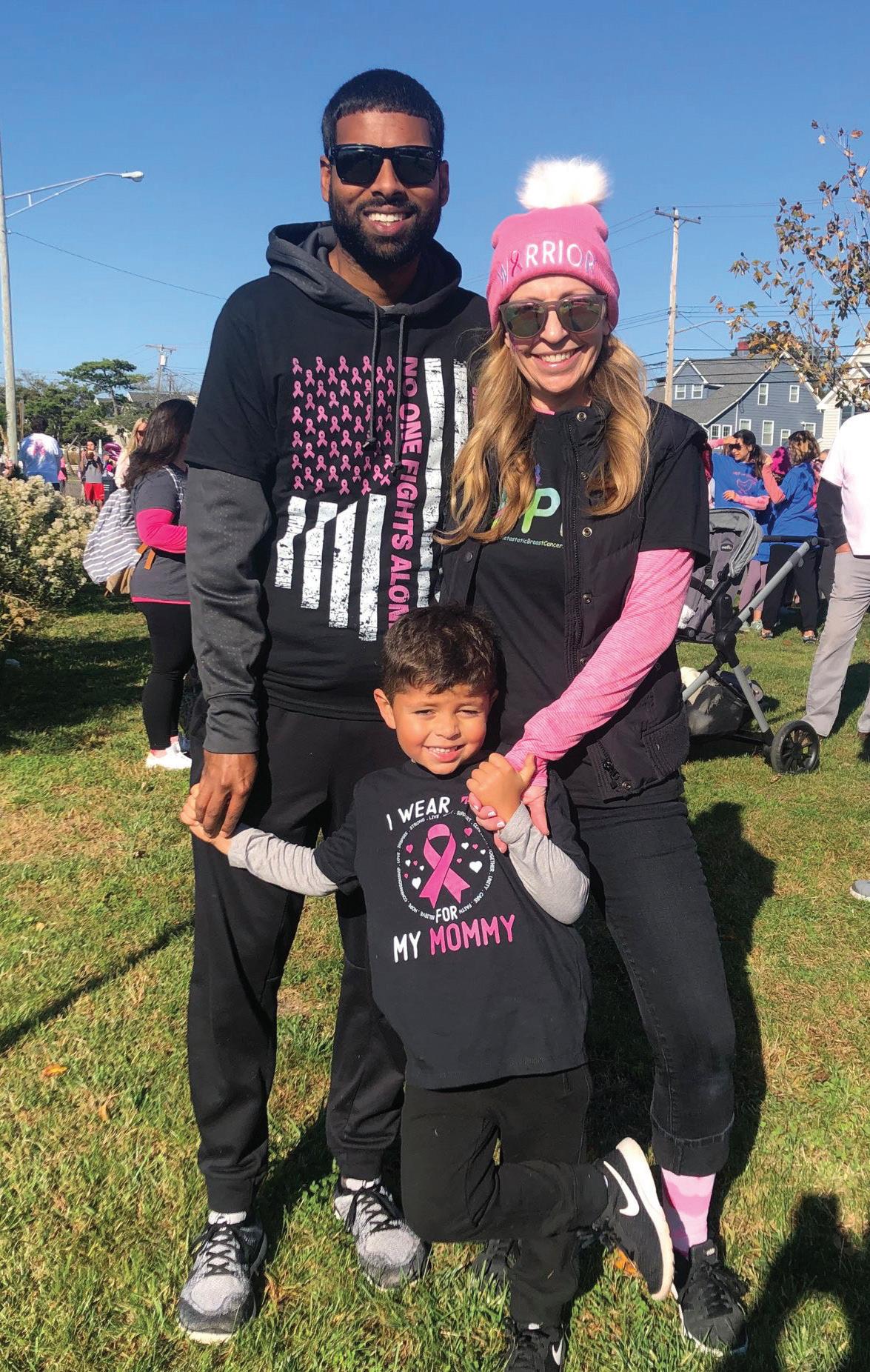
husband, Naveen. Around the holidays, the couple discovered that Swamy was pregnant with their first child.

But during that season of joy, her life took an abrupt turn. “I felt a funny bump at the top of my left breast,” Swamy says. Biopsies confirmed her worst fears: She was 32 and a motherto-be—and had breast cancer. “It was scary because Naveen and I didn’t know what was going on,” she says. “We were overwhelmed.”
She turned to Robert Wood Johnson University Hospital (RWJUH) and Rutgers Cancer Institute of New Jersey, where her treatment was guided by Deborah Toppmeyer, MD, Chief Medical Officer and Director of the Stacy Goldstein Breast Cancer Center.
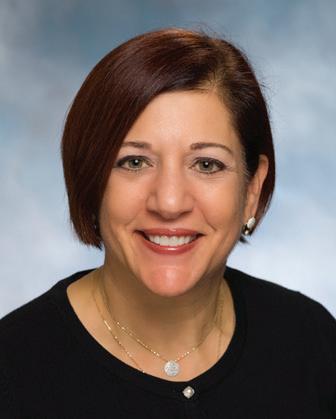
“Dr. Toppmeyer and her team made Naveen and me feel comfortable and safe,” Swamy says. “She told us about other pregnant patients and showed us pictures of their babies. I felt I was taken good care of from the moment I got there.”
A lumpectomy in her second trimester removed the tumor, and there was no sign the cancer had spread. What’s
BRUCE HAFFTY, MD RAHUL PARIKH, MD DEBORAH TOPPMEYER, MD“Naveen and I were crushed,” she says. Trying for another child was now off the table as the couple wondered if she would even survive.
But the cancer treatment team at RWJUH and Rutgers Cancer Institute reassured Swamy that advanced treatment options were available. That’s when she was introduced to Bruce Haffty, MD, System Director of Radiation Oncology at RWJBarnabas Health, and Chair of Radiation Oncology and Associate Vice Chancellor for Cancer Programs at Rutgers Cancer Institute.

Proton therapy is a type of radiation therapy in which beams of energy destroy cancer cells. Different types of radiation can be used to individualize treatment based on a patient’s cancer and history.
Rebecca Swamy (above) twice fought back cancer with support from her family (far left), friends and advanced cancer treatment.
RWJBarnabas Health and Robert Wood Johnson University Hospital, in partnership with Rutgers Cancer Institute of New Jersey—the state’s only NCI-Designated Comprehensive Cancer Center—provide close-to-home access to the most advanced treatment options. Call 844.CANCERNJ or visit www.rwjbh.org/beatcancer.
A key consideration was that the body’s tissues can only absorb a certain amount of radiation before becoming damaged. Areas surrounding Swamy’s tumor that had previously received radiation could be harmed by further treatment. But
more, Swamy’s tumor type required no chemotherapy. “The next three months of my pregnancy were pretty normal,” she says. In September, she gave birth to a healthy baby boy, Shay.
Three days after delivering her baby, Swamy began eight weeks of radiation therapy to ensure the cancer would not return, along with hormone therapy to slow or stop the growth of any lingering cancer cells. Life soon settled into the new normal of parenthood.
At the end of 2019, Swamy and her husband were thinking ahead to her fiveyear cancer-free milestone. “We wanted to have another child,” she says.
But one morning, she felt an unusual bump in the center of her chest. Ultrasounds, a CT scan and other tests revealed that her breast cancer had spread to her sternum, or breastbone.

Dr. Haffty had a way around the problem: He would use a different form of radiation therapy called proton therapy.
Proton therapy delivers a beam of energy that can be more precisely targeted than X-rays used in traditional radiation therapy. “You can really focus the radiation and minimize overlap to previously radiated areas,” Dr. Haffty says. Swamy’s proton therapy required just three visits. Sessions entailed lying on her back while machinery moved around her. “It seemed easier than traditional radiation,” she says. Aside from some redness in irradiated areas, she had few side effects.
At the one-year mark, Swamy underwent a CT scan and bone scan to assess the success of her advanced therapy. The news was fantastic. “There’s no active cancer in my bones,” she says.
Beams of traditional X-ray radiation are highly effective against cancer but mostly pass through tumors and exit the body, potentially exposing healthy cells and tissue along the way. Beams of proton radiation consist of tiny particles that largely stop inside the tumor.
This offers significant advantages to patients whose cancer recurs after earlier radiation therapy. Proton therapy can be precisely directed to spare previously irradiated normal tissue from further exposure and damage.
Recurrent breast cancer treatment is just one application, says Rahul Parikh, MD, Medical Director of the Laurie Proton Therapy Center at Robert Wood Johnson University Hospital. Proton therapy is also ideal for tumors near critical organs such as prostate cancer, pediatric brain cancers and head and neck cancer.
“We can use it to treat just about any cancer from head to toe,” Dr. Parikh says.
Research into proton therapy’s benefits is ongoing. “Studies are still accruing,” Dr. Parikh says. “Over the next several years, we’ll have even more data on proton therapy’s uses and advantages.”
Now 39, she remains a devoted educator and mother. “One of my fourthgrade students did a breast cancer walk in my honor,” she says. “He wore a shirt that said, ‘I wear pink for my teacher.’” Swamy is likewise focused on the path forward. “I see myself living a long and happy life,” she says.
Surgery is a key service at any hospital, making the Center for Advanced Pediatric Surgery a crucial part of The Bristol-Myers Squibb Children’s Hospital (BMSCH) at Robert Wood Johnson University Hospital (RWJUH).
Support for the center is likewise crucial to its mission. This summer, the 34th Annual RWJ University Hospital Foundation Golf Classic raised $375,000 to support the center and its ability to offer a range of specialized surgical services for young patients. Autoland and Mark Montenero, Autoland President and Owner, served as Presenting Sponsor for this year’s event.
“We are deeply grateful for Autoland’s and Mark’s generous support,” says Bill Arnold, President and Chief Executive Officer of RWJUH. “Their commitment to this year’s outing, along with that of all of our sponsors, helps BMSCH continue to provide exceptional care and the highest-level
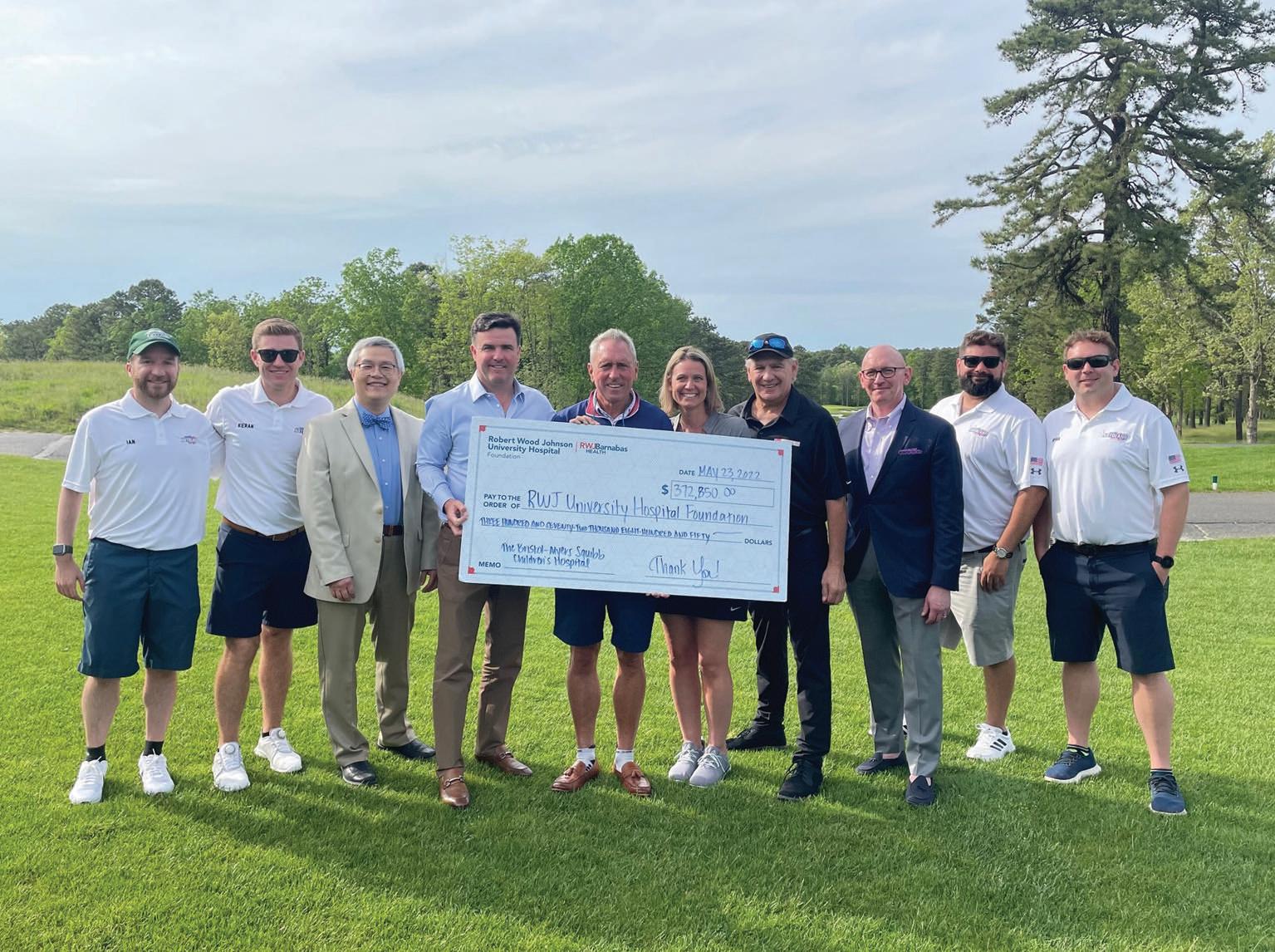
specialized services to children and adolescents in our state and region.”
“As one of only a small handful of children’s hospitals in New Jersey with a dedicated surgical center for children and adolescents, we are grateful for the support from our community to keep it outfitted with the latest technologies and improvements,” says Kelly Chaknis, Chief Administrative Officer at BMSCH. “This kind of family-centered-care-focused facility enables our faculty to provide the highest levels of care to our families. We are excited to provide them with the resources and technology they need to advance children’s health and support the continued growth of New Jersey’s only pediatric academic medical campus.”
At the heart of the Center for Advanced Pediatric Surgery is a dedicated pediatric operating room suite that provides surgical services for newborn patients up to age 21.
In addition to the highly specialized Center for Advanced Pediatric Surgery, The BristolMyers Squibb Children’s Hospital (BMSCH) at Robert Wood Johnson University Hospital (RWJUH) offers a dedicated Pediatric Intensive Care Unit and a 20-bed, state-ofthe-art, multidisciplinary inpatient facility that provides a full range of services to critically ill or injured children in a patientand family-centered environment.
BMSCH is also home to a 37-bed Level IV Regional Neonatal Intensive Care Unit, with a team of board-certified neonatologists; nationally certified nurses; respiratory therapists; social workers; speech and physical therapists; lactation consultants; nutritionists; and child life specialists.
The suite’s six operating rooms and centrally located supplies give BMSCH faculty and community surgeons ample, dedicated capacity to perform a broad range of surgical procedures spanning a variety of specialties including:
• Urology
• Orthopedics
• Orthopedics-spine
• Orthopedics-trauma
• General surgery
• Neurosurgery
• Otorhinolaryngology
• Dentistry
• Ophthalmology
Each operating room is equipped for surgeons to perform minor pediatric gastroenterology and pulmonary procedures as well. The center’s PostAcute Care Unit (PACU) offers 15 bays and an isolation room.
The Golf Classic is among numerous donor venues that allow the RWJ University Hospital Foundation to help the Center for Advanced Pediatric Surgery and BMSCH provide advanced technology, highly skilled healthcare professionals and enhanced programs and services to meet the unique needs of patients and their families.
Providers use augmented reality technology to undergo ultrasound training using a new state-ofthe-art system.
midwives and certified registered nurse anesthetists. The APP fellowship program is focused on critical care, but future tracks are being created, and the CAE Ultrasound Vimidex will be used for many ultrasound training needs.
Learning to use ultrasound technology takes hands-on training. Now a new technology is giving more providers access to hightech, tangible instruction across the entire RWJBarnabas Health (RWJBH) system thanks to a $125,000 grant that the Hearst Foundation awarded the Robert Wood Johnson University Hospital Foundation.
The Hearst gift funded the purchase of a CAE Ultrasound Vimidex mannequin, a state-of-the-art simulation tool that shows providers how to use ultrasound at the bedside. Simulation has been shown to improve learning, performance, critical thinking and self-confidence.
“The augmented reality [AR] system eliminates the need of only utilizing human models,” says Olivia Nicastro,
ACNP-BC, APN, an intensive care unit nurse practitioner and the Director of the APP Critical Care Fellowship at Robert Wood Johnson University Hospital (RWJUH). “This amazing technology will help better train the next generation of providers.”
The new mannequin, with its lifelike torso and head, will facilitate training for a great number of advanced practice providers (APPs), residents or any clinician who would like to participate in such training. This ultimately helps satisfy training needs for providers across the RWJBH system. APPs include physician assistants, nurse practitioners,
The system uses AR technology to help learners visualize organs and other soft tissues while using an ultrasound wand attached to the mannequin. Trainees wear a Microsoft HoloLens AR headset that displays multidimensional, holographic images of organs as users move the wand over different parts of the mannequin’s body. The images show learners where organs are and what they look like in different disease states.
“With the HoloLens, you can pull up an organ like the heart, spin it around and look at the circulation as if it were a real, beating heart in front of you,”
says Sherry Stein, APN, Administrative Director of Hospital-Based Providers and Section Chief for Advanced Practice Providers at RWJUH. “We can program the computer to have the mannequins feature certain disorders like fluid in the lungs, then ask trainees to pick up these conditions using ultrasound.”
The hospital is purchasing software packages covering more than 50 conditions along with additional HoloLens headsets so learners from a variety of disciplines and departments from critical care APPs to emergency medicine residents can use the system.
“We want this to be a multidisciplinary, collaborative effort,” says Stein. “We’d like everybody to use this amazing tool.”


cancer
Cancer Center,
the